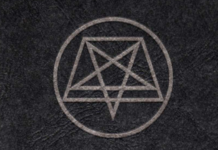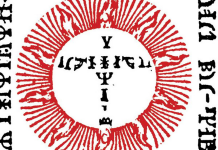
 The Book of Grimoires: The Secret Grammar of Magic, by Claude Lecouteux
The Book of Grimoires: The Secret Grammar of Magic, by Claude Lecouteux
Inner Traditions, 9781620551875, 264 pp., 2002, 2013 (English translation)
To understand a book it’s important to know the purpose for which it was written. Lecouteux states that his aim is to provide a historical account of the use of grimoires, and to synthesize a “universal grimoire” from numerous source texts, but I find this proposal problematic. I’ve read several academic books on grimoires and medieval magick as part of my degree, including collections of original articles or reproductions of sections from various texts. Lecouteux says the book “takes the approach of a guided tour,”1 and that the material is obscure and complex, so he will explain the material throughout the book in order to make sense of what is provided, and this, I feel, is where things falls apart.
The Book of Grimoires is by largely made up of excerpts from various grimoires.2 Now, Lecouteux’s focus is different from what is generally thought of when discussing grimoires, such as texts like The Heptameron, Liber Iuratus Honorii, or The Key of Solomon. Instead he focuses on charms and spells, not evocation. These charms are grouped according to either their method of use (name magick, planetary magick) or their purpose (healing, love, protection). I found the presentation of these charms frustrating, for they are titled, but one has to follow an endnote to find out which text the charm is from. This might seem like a minor issue, but when there are often five charms on a single page, it becomes really disruptive just to see what the source of the text is when it could have far more easily been included in the text.
While the back and introduction claim that the charms are discussed with instructions for their use, that is rarely the case. For instance, it is very common in grimoires to recommend the use of a specific psalm and then give the first few words of it in Latin — this was a shorthand telling the magician to use the entire psalm or verse. Lecouteux does not explain this, nor does he provide the helpful instruction of telling the reader which psalm is referenced. As much work as I’ve done with ceremonial magick, I will confess I don’t have all the psalms memorized in Latin.3
Another example is the divination method to know if a patient will be cured,4 which involves using numerology to figure out the value of the patient’s name, comparing that to the number “of days starting from the phase of the moon when the man was afflicted,” and if the patient’s name is higher they’ll survive. That sounds straightforward (though the phase of the moon is a bit confusing), but is then followed by a calculation table that confuses the matter more by listing examples such as “Two and ij: the large prevails.” Further obscuring this is a chart in the middle of the instructions with the planets and a numerical value, which are discussed nowhere in this section. Lastly, Lecouteux, in an effort to provide exact reproductions for source materials, provides the original version of the numerology chart that in no way matches up to the number-letter combination he provided. I reread this section, tried my hand at the math, and had others read it over to make sure it wasn’t just me, yet we were not able to make anything out of this instruction. Now, that may not be Lecouteux’s fault, it may be the original text was nonsensical, but if that’s the case it either should not have been included, or mentioned this part doesn’t work, or he could have provided instructions that he has reconstructed it to make it finally work.
Outside of all of this, I found the work problematic academically. For instance, Lecouteux claims that the Jewish people stopped giving YHWH new names when they reached 72, because they were sure the true name must be in that group somewhere.5 This claim is unsourced, and goes against reality in that there are more than 73 names for YHWH in the Old Testament (I stopped counting at that point) and overlooks the reasons why 72 is a sacred number, rather than an arbitrary stopping point. Continuing with the issues of names when AGLA is discussed two different Hebrew sentences are given, neither is the correct one, but Lecouteux claims they both translate to the same thing, which is also not related to the standard translations of the Notariqon.
As an explanation of the grimoiric system, and as a workable grimoire itself, The Book of Grimoires is lacking. However, for those with an interest in a collection of charms from a wide variety of source texts, but not necessarily for use or study, this book might interest you. To supplement your reading, I recommend Owen Davies book Grimoires for an explanation of the grimoiric system and history from an academic perspective. Additionally, if you’re looking for an explanation and history from a magickal perspective with actual workable sections in the text, I’d also recommend Aaron Leitch’s Secrets of the Magical Grimoires.








